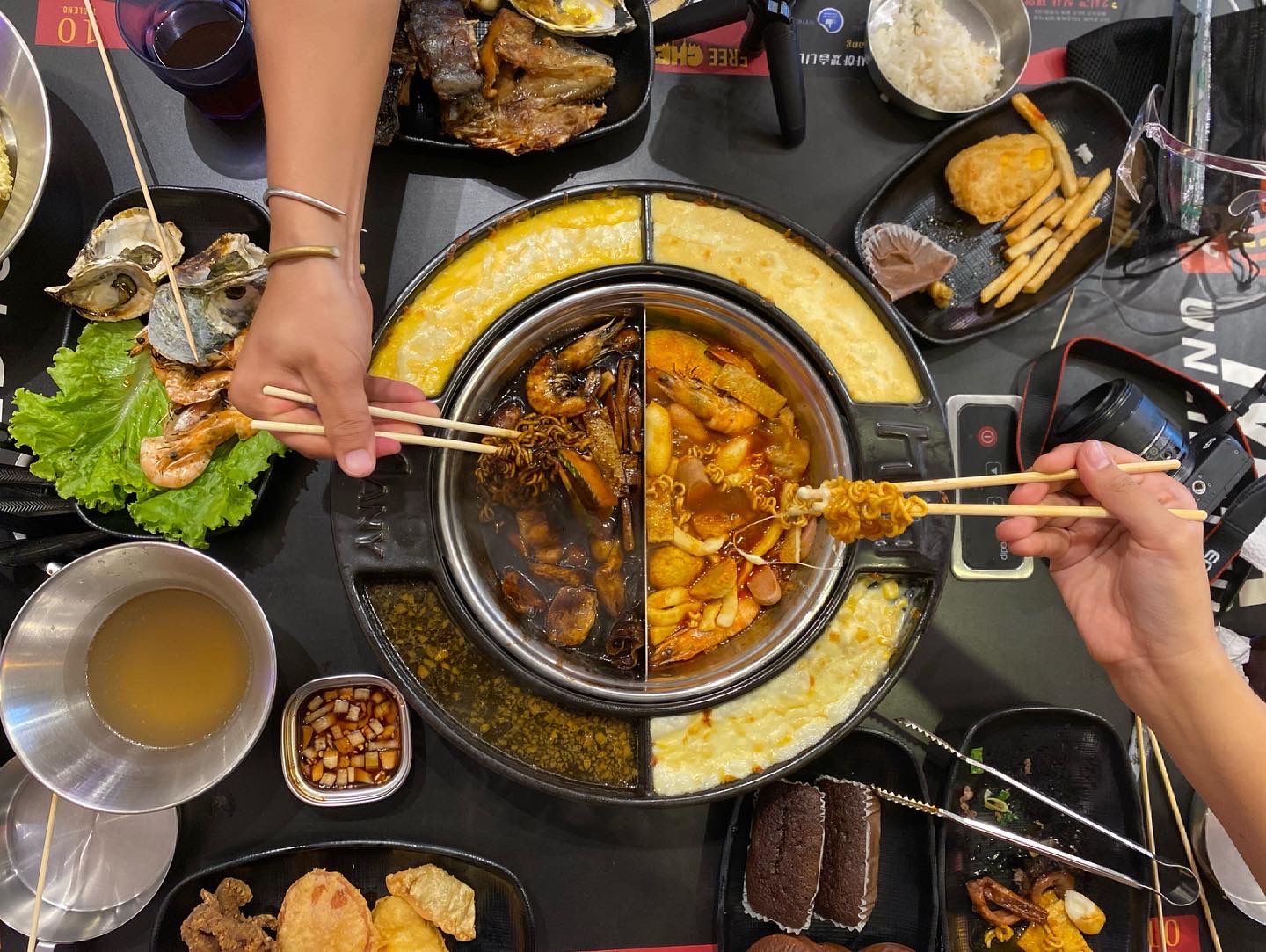Gaming
Touhou Genso Wanderer Foresight Review

Solve incidents and fight supernatural threats as Reimu Hakurei in the newest Touhou spin-off, Touhou Genso Wanderer Foresight.
Touhou Genso Wanderer is a roguelike dungeon crawler series based on the Touhou Project, a multimedia franchise that is constantly expanding thanks to its dedicated and talented fanbase. Touhou has been going strong since 1996 and constantly receives new official and fan-made games.
Foresight is the third entry in the Genso Wanderer spin-off series, which draws heavy inspiration from classic dungeon crawler games, like Pokémon Mystery Dungeon and earlier Dragon Quest titles.
Touhou Genso Wanderer -FORESIGHT-
Developer: AQUASTYLE
Publisher: Phoenixx Inc.
Platforms: Nintendo Switch, PlayStation 4, Microsoft Windows (Reviewed)
Release Date: May 15, 2024
Players: 1
Price: $34.99

When it comes to its gameplay, Touhou Genso Wanderer is turn-based in the sense where a turn passes every time you perform an action, meaning enemies will move or attack every time you do something. If that’s difficult to grasp, it basically works on Crypt of the Necrodancer rules.
What this means for combat is that optimal movement is important, as you would be basically wasting turns by taking one extra step when you don’t need it, essentially giving your enemy a free turn. The game makes you think a lot about your positioning, and your spells require you to place enemies in certain formations to be effective as well.
It’s easy to think that Genso Wanderer‘s combat is simple, as you’ll mostly just hold the attack button while lining enemies up at first, but there’s a lot of depth that comes from enemy types, different status effects, and special challenge dungeons, as well as the game’s incredibly tough boss fights.

As far as its exploration goes, Genso Wanderer‘s dungeons are straightforward to navigate and feature pretty simple maps. The map shows all room connections as you explore your current floor, as well as items and enemy locations.
Most of the main story dungeons in Genso Wanderer are quite long, but feature multiple different areas, boss fights, and story content every few floors, so even though they might feel a little bloated, they are actually filled with content instead of filler.
Most main story and side quest dungeons also feature checkpoints after every boss encounter and let you teleport between floors at will, so you aren’t forced to finish everything in one go; in fact, the game expects you to grind and will throw random difficulty spikes or DPS check bosses at you reasonably early into a playthrough.

There’s a good amount of quality-of-life features in Genso Wanderer, like being able to dash through dungeon corridors you already explored, making backtracking painless. Reimu moves so fast while dashing that it almost works like fast travel in a way, which she also has access to outside of dungeons.
The game features very difficult boss encounters, but thankfully only registers item consumption when beating them, which means that you can go all out and use as many healing or power-up items as you need during your tries without being punished for it.
There is also a pretty handy in-game wiki that gives you information on enemies, special tiles, mechanics, and items, which is great to have considering how deep some of Genso Wanderer‘s mechanics are, saving you the trouble of playing through the game with a hundred wiki articles and forum pages open.

During exploration, players have to manage their hunger, which slowly decreases as you perform actions. Players can find different food items inside of dungeons or buy them through vendors that are unlocked by restoring your shrine.
Item management is very important in Genso Wanderer, as there are lots of status effects that the player is expected to have an answer for, and a good chunk of them can be lethal if the player tries to simply power through it.
Most boss fights will also serve as checks of your game knowledge, as some of them can inflict deadly debuffs that kill you in a set number of turns, which can only be dispelled with certain spell cards or recovery items.

An interesting item type present in the Genso Wanderer series is the gap, which allows players to store items inside of a dimensional pocket, freeing up inventory space. There are different types of gaps, and they all have different rules on how they interact with what’s being stored.
It’s easy to ignore this system at first, since the regular gaps only allow you to store items but not retrieve them, instead having to be thrown at a wall so they break and spill everything out. The system only really “clicks” once the player finds a preserve gap, which allows you to store and retrieve items at will, as well as the spell card that allows you to expand a gap’s item slots.
There are a good amount of these items, like the total comfort gap, which heals you fully once you store an item inside of it, or the shelter gap, which allows you to dodge combat mechanics by hopping inside of it. It’s a fun system with a lot of relevant uses that makes the game mechanically deeper, as other RPGs would just give you a bigger bag instead of creating something like this.

It’s quite clear that Genso Wanderer was developed by Touhou fans, as the amount of care that went into the game is astounding. The game is full of little nods to the larger media franchise, going as far as to remaster certain themes from mainline entries to use as its boss themes.
Foresight features most of the expected Touhou characters, covering a good chunk of the cast from Embodiment of Scarlet Devil and Imperishable Night, and Despite only having Reimu as a playable character, the player gets to bring other fan-favorites from the Touhou cast as companions into dungeons, while other characters are used for social links.
Possibly the most impressive thing about the game is its art, especially when it comes to its CGs and character portraits. Aqua Style’s artist Curee did a fantastic job bringing Touhou‘s characters to life, and Foresight might be the nicest-looking game in the Genso Wanderer franchise so far.

Genso Wanderer has different layers of meta progression and feels really incremental as you are always gaining power in small ways. While there are more traditional roguelike systems, like repairing your shrine so you gain access to new vendors or quality of life features, there are also lots of other systems that make you stronger in small increments, like the Izanagi Merge and Izanagi Link.
The game’s combat system mostly works on type advantages, and your main way of interacting with it is through either
-

 Destination8 months ago
Destination8 months agoSingapore Airlines CEO set to join board of Air India, BA News, BA
-

 Breaking News9 months ago
Breaking News9 months agoCroatia to reintroduce compulsory military draft as regional tensions soar
-

 Tech News11 months ago
Tech News11 months agoBangladeshi police agents accused of selling citizens’ personal information on Telegram
-

 Breaking News9 months ago
Breaking News9 months agoBangladesh crisis: Refaat Ahmed sworn in as Bangladesh’s new chief justice
-

 Productivity11 months ago
Productivity11 months agoHow Your Contact Center Can Become A Customer Engagement Center
-

 Toys11 months ago
Toys11 months ago15 of the Best Trike & Tricycles Mums Recommend
-

 Guides & Tips9 months ago
Guides & Tips9 months agoHave Unlimited Korean Food at MANY Unlimited Topokki!
-

 Gadgets3 months ago
Gadgets3 months agoSupernatural Season 16 Revival News, Cast, Plot and Release Date























